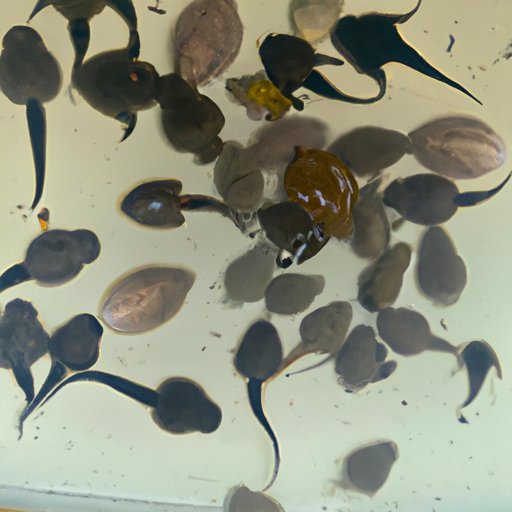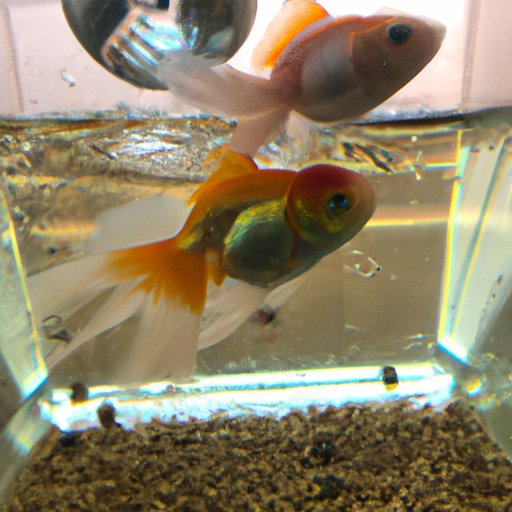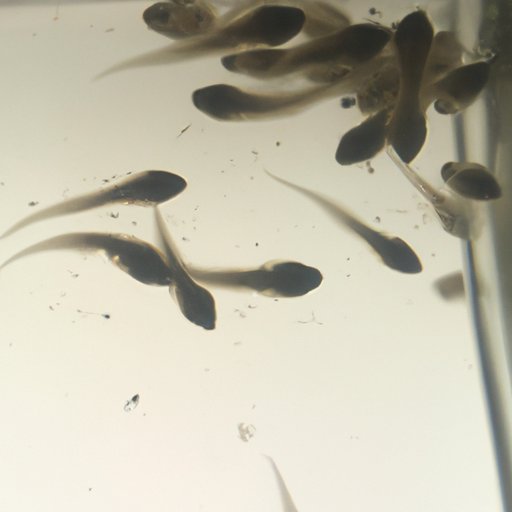Introduction
Tadpoles are the larvae of frogs and other amphibian species. They typically have long tails and can be found in bodies of water, such as ponds, lakes, and streams. Caring for a tadpole at home can be a rewarding and educational experience for both adults and children alike. However, it is important to understand the specific requirements of the species of tadpole you have and to provide a suitable environment for it to thrive.
Research the Specific Species of Tadpole You Have and Its Habitat Requirements
The first step in caring for a tadpole is to identify the species of tadpole you have. This will help you determine the specific habitat requirements the species needs in order to survive. Different species of tadpoles may require different kinds of water parameters and environments in order to remain healthy. Researching the species of tadpole you have and its habitat requirements will help you create an appropriate environment for it to live in.
Create a Tank or Bowl with the Correct Water Parameters and Environment for Your Tadpole
Once you have identified the species of tadpole you have, you can begin setting up the tank or bowl where your tadpole will live. Considerations for setting up the tank include choosing the right size and shape, filtering the water, and adding aquatic plants. The size and shape of the tank should be large enough to accommodate the size of your tadpole, but small enough to ensure that the water does not become polluted.
Choosing the right filter for the tank is also important. The filter should be powerful enough to keep the water clean and free of debris, but gentle enough that it does not cause too much turbulence in the water. Adding aquatic plants to the tank will provide cover and hiding spots for your tadpole. Plants will also help keep the water clean by absorbing excess nutrients.

Feed Your Tadpole with a Variety of Food Sources
Tadpoles need a variety of food sources in order to remain healthy. These can include commercial fish food, algae wafers, frozen or live brine shrimp, and chopped vegetables. When introducing new foods to the tank, it is important to do so gradually, as sudden changes can shock the tadpole. Be sure to monitor the amount of food you are feeding your tadpole, as overfeeding can lead to water pollution.

Monitor the Water Temperature and pH Levels Regularly
It is important to monitor the water temperature and pH levels of the tank regularly. Most species of tadpoles prefer water temperatures between 65 and 75 degrees Fahrenheit, and a pH level between 6.5 and 8.0. Tools such as thermometers and pH test kits can be used to measure these levels accurately. If the water temperature or pH levels deviate from these optimal ranges, adjustments should be made to bring them back within range.

Clean the Tank or Bowl Periodically
Finally, it is important to clean the tank or bowl periodically. This helps to remove any debris or uneaten food that has accumulated in the tank. How often the tank needs to be cleaned depends on the size and number of tadpoles in the tank. Generally, tanks should be cleaned every two weeks. When cleaning the tank, use a gravel vacuum to remove debris from the bottom, and change 25-50% of the water. Be sure to use dechlorinated water when refilling the tank.
Conclusion
Caring for a tadpole at home can be a rewarding and educational experience. By following the steps outlined above, you can create an environment that is suitable for your tadpole to thrive in. Be sure to research the species of tadpole you have and its habitat requirements, set up the tank correctly, feed your tadpole a variety of food sources, monitor the water temperature and pH levels regularly, and clean the tank periodically.
(Note: Is this article not meeting your expectations? Do you have knowledge or insights to share? Unlock new opportunities and expand your reach by joining our authors team. Click Registration to join us and share your expertise with our readers.)
